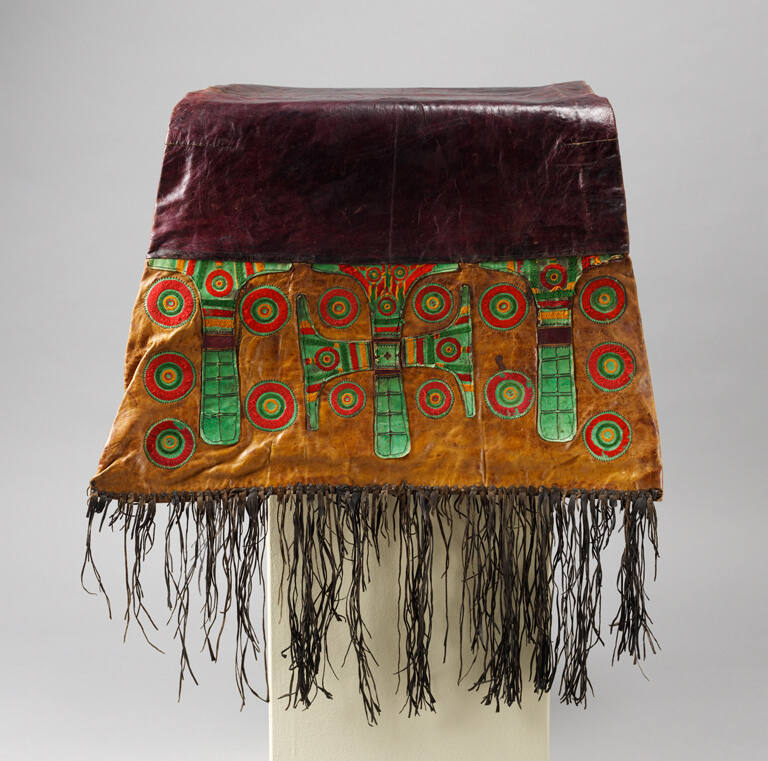
Object Details
Culture
Tuareg
Date
mid-20th century
Medium
Camel leather, cotton
Dimensions
Approx.: 23 × 52 inches (58.4 × 132.1 cm)
Credit Line
Gift of Amyas Naegele, Class of 1978
Object
Number
2003.069.028
BRIEF DESCRIPTIONThis is a leather cushion made by a Tuareg blacksmith.WHERE WAS IT MADE?Until very (…)
BRIEF DESCRIPTIONThis is a leather cushion made by a Tuareg blacksmith.WHERE WAS IT MADE?Until very recently, Tuareg peoples lived a nomadic lifestyle, trading and raising cattle around the western Sahara and northwestern Sudan.HOW WAS IT MADE?Blacksmiths make all leatherwork and silver jewelry among the Tuareg. Regarded by the class-based Tuareg as racially and culturally inferior, members of the blacksmith caste nevertheless hold some power in the community. The Tuareg, along with many other African cultural groups, believe that blacksmiths have mystical powers and a special relationship to the elements that allow them to work with fire and earth (metals). With these powers they enjoy special privileges and a certain esteem in the community, but are not regarded by the Tuareg as equals.HOW WAS IT USED?Cushions like this one were placed on a woman’s camel saddle.WHY DOES IT LOOK LIKE THIS?Most Tuareg material culture is symmetrical and non-symbolic. The forms and patterns on this cushion do not represent anything in nature, nor do they carry religious significance.












